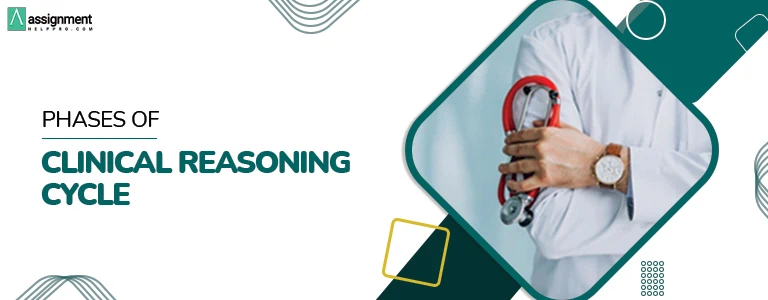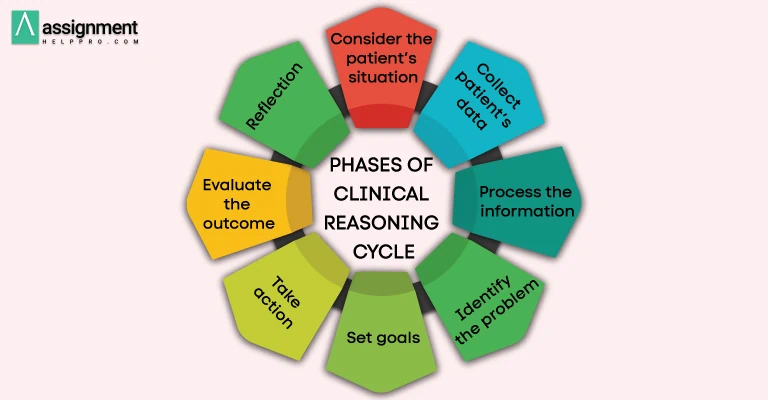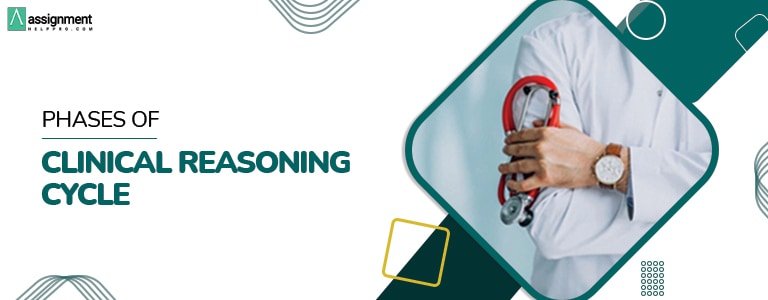Are you a medical or nursing student? If yes, then you would have frequently heard about the term “Clinical Reasoning”. But do you know what it means? In case, you are unsure of what clinical reasoning means, then continue reading this blog post. Here, you will get to know everything about the definition of clinical reasoning, its benefits, and the various phases of the clinical reasoning cycle.

What is Clinical Reasoning?
Clinical Thinking is the mental cycle utilized by clinicians, attendants, and other medical services experts in examining a patient’s condition and finding a precise conclusion and therapy plan.
To put it in simple terms, clinical reasoning is the ability of a clinician or nurse to effectively assess a patient’s health condition and initiate the appropriate course of action by utilizing their clinical knowledge of the local culture and medical ethics. Clinical reasoning and terms like critical thinking, clinical judgment, problem-solving, and decision-making have sometimes been used interchangeably.
Benefits of Clinical Reasoning
Sometimes poor clinical reasoning skills can put a patient’s health or even death in jeopardy. Therefore, every healthcare professional needs to be well-versed in the clinical reasoning cycle.
Clinical reasoning generally has many advantages. Let’s now examine the significance of clinical reasoning.
If you have good clinical reasoning skills, then you can
- Make an accurate diagnosis.
- Improve the health of the patients.
- Make prompt life-saving treatment plans.
- Reduce the patient’s medical expenses by avoiding unnecessary medical examinations.
What is meant by the Clinical Reasoning Cycle?
An educational model called the Clinical Reasoning Cycle was created specifically for nursing students. The ultimate goal of this model is to educate students and equip them with the skills they need to care for critically ill patients.
In 2009, Levett-Jones provided a description of the clinical reasoning cycle. There are eight stages to his proposed clinical reasoning cycle. Healthcare professionals can use this cycle to go through a series of systematic phases and arrive at a decision that is best for patients.
Phases of Clinical Reasoning Cycle
If you are a clinician or a nurse, then you can follow the below-mentioned 8 steps of the clinical reasoning cycle to assess a patient’s health.

- Consider the patient’s situation
- Collect patient data
- Process the information
- Identify the problem
- Set goals
- Take action
- Evaluate the outcome
- Reflection
Consider the patient’s situation
This is the first phase of the clinical reasoning cycle. Here, in this phase, you need to receive the basic information and the current medical status of the patient. For example, A 50-year-old man is admitted to the ICU on account of jaundice.
Collect patient data
It is one of the important phases in the cycle. Here, you need to carefully collect or consider the medical history of the patient along with the history of health complaints, current treatment plan, results of previous medical investigations, and current vital signs.
In order to establish cues and draw information, after collecting the patient’s information, you need to analyze the findings using your knowledge of pharmacology, pathology, physiology, culture, and ethics.
Process the information
This is the complex and core phase of the clinical reasoning cycle where you need to process all the gathered information on a patient’s health status with respect to the pharmacological and pathophysiological patterns, identify the relevant details, and then determine the potential outcomes to make the possible decisions.
Identify the problem
In this phase, you need to determine the reason behind the patient’s current health status. You can rectify the problem correctly only if the problem is identified properly.
Set goals
After analyzing the patient’s health condition, here, in this phase, you need to determine the treatment goals. The treatment plan created should be within a time-oriented goal. You should be aware of all the steps to be undertaken and the time frame of your desired outcome.
Take action
After preparing a treatment plan, in this phase, you need to implement the plan or the action steps on the patient to attain a possible outcome for the patient’s health. Most importantly, in order to achieve the treatment goal of a particular patient, each and every member of the healthcare team must know the updated information in the plan.
Evaluate the outcome
At this phase, you need to evaluate whether your plan of action for disease diagnosis or treatment plan is effective or not. By analyzing your outcome, you can decide whether or not to continue with the same procedure or readjust the plan.
Reflection
This is the final stage of clinical reasoning where you need to reflect on the new things that you have learned from that particular case, the things that you could have done differently to achieve a better outcome, and the work improvement areas.
Conclusion
We hope you have now gained a better understanding of the major steps involved in the clinical reasoning cycle. If you are a medical or a nursing student, then during your course duration your professors may ask you to submit assignments on clinical reasoning cycle to improve your skills. In case, you experience any difficulties with writing your medical and nursing assignments on clinical reasoning, contact us immediately.



